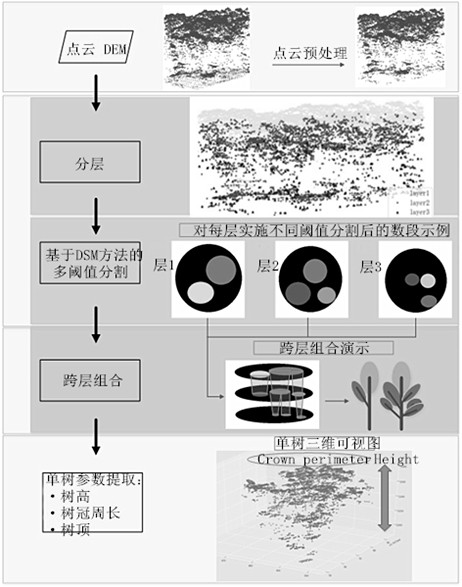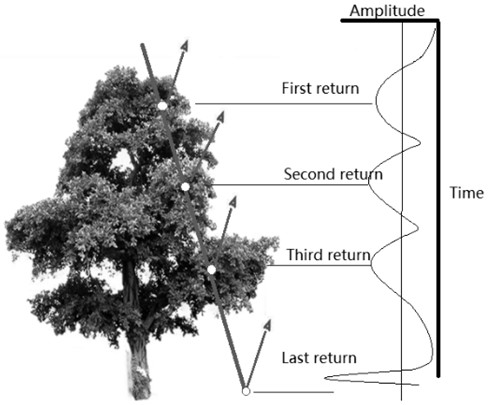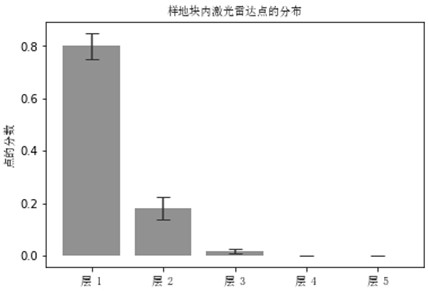Method for measuring tree-level parameters of deciduous forest based on small-spot airborne radar
An airborne radar and parameter measurement technology, which is applied in the field of forest resources monitoring, can solve the problems of low density and resolution of understory vegetation, lack of understory tree information, and difficulty in detecting canopy edges, etc., to improve the overall accuracy , reduce over-segmentation, and strong robustness
- Summary
- Abstract
- Description
- Claims
- Application Information
AI Technical Summary
Problems solved by technology
Method used
Image
Examples
Embodiment Construction
[0056] In order to facilitate the understanding of those skilled in the art, the present invention will be further described below in conjunction with the embodiments and accompanying drawings, and the contents mentioned in the embodiments are not intended to limit the present invention.
[0057] The implementation site for this example is Robinson Forest (coordinates: 37°28'23"N 83° 08'36"W), located in the rugged Cumberland Plateau in Brissett, Perry, and Knott counties in southeastern Kentucky the eastern section. The area is a diverse, contiguous mixed mesophyte forest with approximately 80 tree species, including northern red oak (Quercus rubra L.), white oak (Quercusalba L.), boxwood (Liriodendron tulipifera L.), American Beech (Fagus grandifolia Ehrh.), eastern hemlock (Tsuga canadensis (L.) Carrière) and sugar maple (Acer saccharum Marsh.) and other dominant and secondary dominant trees. Understory plants include Cercis canadensis L., Cornus florida L., Lindera benzoi...
PUM
 Login to View More
Login to View More Abstract
Description
Claims
Application Information
 Login to View More
Login to View More - R&D
- Intellectual Property
- Life Sciences
- Materials
- Tech Scout
- Unparalleled Data Quality
- Higher Quality Content
- 60% Fewer Hallucinations
Browse by: Latest US Patents, China's latest patents, Technical Efficacy Thesaurus, Application Domain, Technology Topic, Popular Technical Reports.
© 2025 PatSnap. All rights reserved.Legal|Privacy policy|Modern Slavery Act Transparency Statement|Sitemap|About US| Contact US: help@patsnap.com



